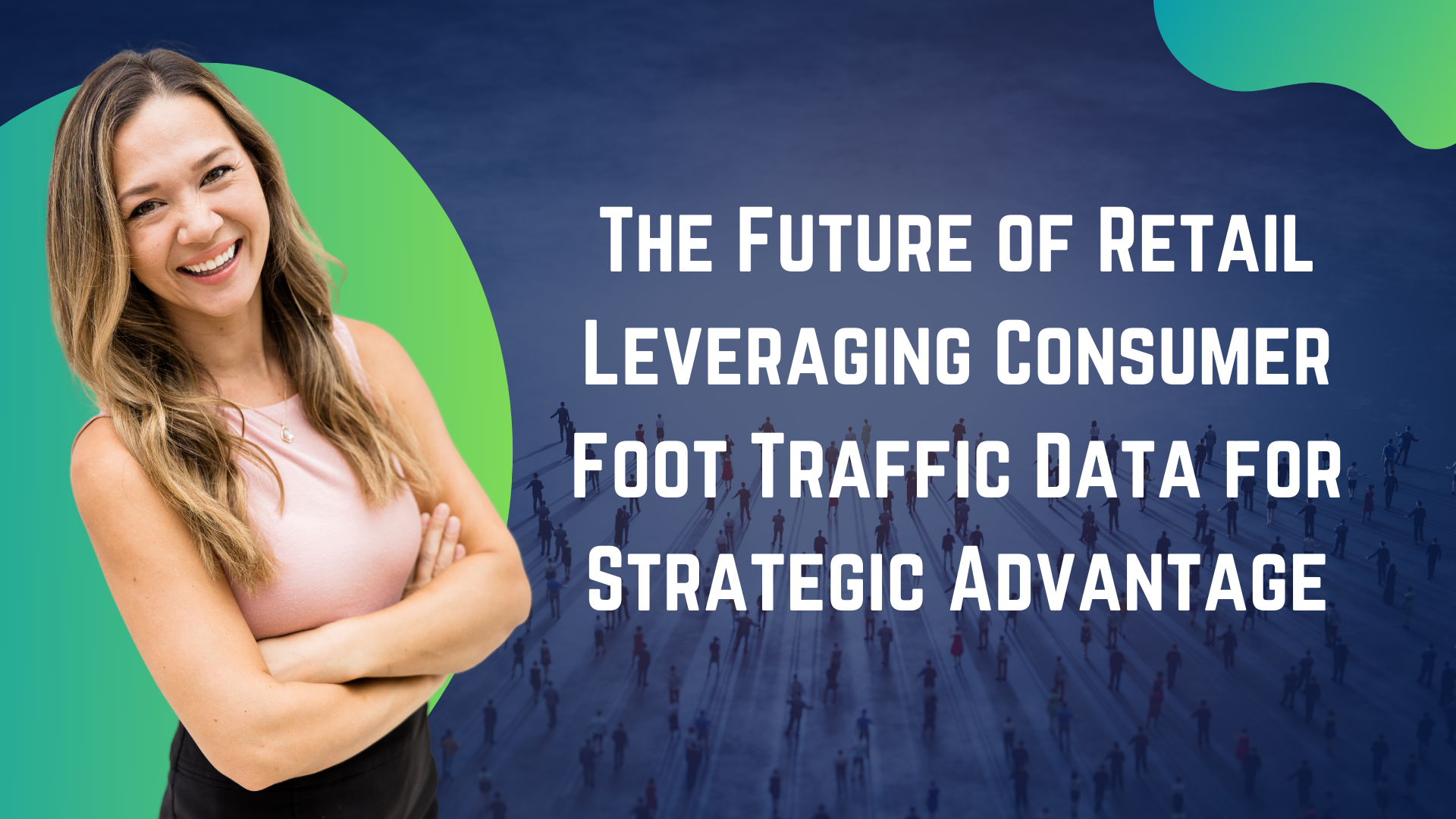As the retail landscape continues to evolve, understanding and leveraging consumer foot traffic data has become a critical factor for businesses aiming to stay competitive. The ability to gather, analyze, and act upon this data provides retailers with a strategic advantage, allowing them to enhance customer experiences, optimize operations, and drive sales. This blog will explore the future of retail through the lens of foot traffic data, highlighting its importance and potential applications.
The Significance of Foot Traffic Data
Foot traffic data refers to the measurement of people entering and moving through physical retail spaces. This data offers valuable insights into customer behavior, preferences, and trends, enabling retailers to make informed decisions about store layouts, marketing strategies, and resource allocation.
Enhanced Customer Insights: By tracking foot traffic, retailers can gain a detailed understanding of how customers navigate their stores. This includes identifying high-traffic areas, popular products, and peak shopping times. Such insights are crucial for optimizing store layouts and improving the overall shopping experience (Retail Foot Analytics) (Improvado).
Operational Efficiency: Foot traffic data helps retailers optimize staffing levels and inventory management. By understanding peak times, retailers can ensure adequate staffing and stock levels, reducing wait times and avoiding stockouts. This leads to improved customer satisfaction and operational efficiency (BCG Global).
Methods of Collecting Foot Traffic Data
- WiFi and Bluetooth Tracking: Modern retailers use WiFi and Bluetooth signals to track customer movements within the store. These technologies detect mobile devices as customers move through the store, providing real-time data on foot traffic patterns.
- In-Store Sensors: Sensors such as thermal cameras and infrared counters are used to count the number of people entering and exiting a store. These sensors provide accurate foot traffic data, which can be analyzed to understand customer flow and behavior (Improvado).
- Video Analytics: Advanced video analytics systems use cameras and AI to monitor customer movements and interactions with products. This method provides detailed visual data, allowing retailers to analyze customer behavior at a granular level (McKinsey & Company).
Analyzing Foot Traffic Data
Heat Mapping: Heat maps visually represent the areas of a store that receive the most foot traffic. By analyzing these maps, retailers can identify popular sections and optimize product placements to maximize visibility and sales (BCG Global).
Trend Analysis: Analyzing foot traffic data over time helps retailers identify trends and patterns. This includes seasonal variations, peak shopping days, and the impact of marketing campaigns. Understanding these trends allows retailers to make strategic adjustments to their operations and marketing efforts (Improvado).
Customer Segmentation: Foot traffic data can be used to segment customers based on their behavior and preferences. Retailers can create targeted marketing campaigns and personalized shopping experiences for different customer segments, increasing engagement and loyalty (Retail Foot Analytics).
Applications of Foot Traffic Data
Optimizing Store Layouts: Foot traffic data provides insights into how customers move through a store. Retailers can use this information to optimize store layouts, ensuring that high-demand products are easily accessible and strategically placing promotional displays to capture customer attention (Retail Foot Analytics).
Targeted Promotions: By understanding peak shopping times and high-traffic areas, retailers can run targeted promotions and discounts to attract customers. For example, special offers can be placed in high-traffic areas to increase impulse purchases and drive sales (BCG Global) (Improvado).
Improving Customer Experience: Foot traffic data helps retailers enhance the customer experience by reducing wait times and improving service. By knowing when the store is busiest, retailers can ensure that more staff are available to assist customers, leading to a better shopping experience and increased customer satisfaction (BCG Global).
Future Trends in Foot Traffic Data
Integration with AI and Machine Learning: The future of foot traffic analysis lies in the integration of AI and machine learning. These technologies can enhance data accuracy, provide predictive insights, and automate data analysis, making it easier for retailers to leverage foot traffic data effectively (McKinsey & Company) (Improvado).
IoT and Advanced Sensors: Emerging technologies such as IoT devices and advanced sensors are revolutionizing foot traffic data collection. These innovations provide more accurate and real-time data, enhancing the ability to analyze and act upon consumer behavior (Retail Foot Analytics).
Comprehensive Consumer Profiles: By combining foot traffic data with other data sources, such as online behavior and purchase history, retailers can create comprehensive consumer profiles. This holistic view of the customer journey enables more effective marketing strategies and improved customer experiences (BCG Global).
Conclusion
Foot traffic data is a powerful tool for understanding consumer behavior and driving business success in the retail industry. By leveraging detailed insights into customer movements and preferences, retailers can optimize their operations, enhance marketing strategies, and improve customer experiences. As technology continues to evolve, the potential of foot traffic data will only grow, providing even more opportunities for retailers to stay ahead of the competition and meet the ever-changing needs of their customers.
Embracing the future of retail through the strategic use of foot traffic data will unlock new possibilities for growth and success. Retailers who invest in the right technologies and analytical tools will be well-positioned to thrive in the dynamic retail landscape.

